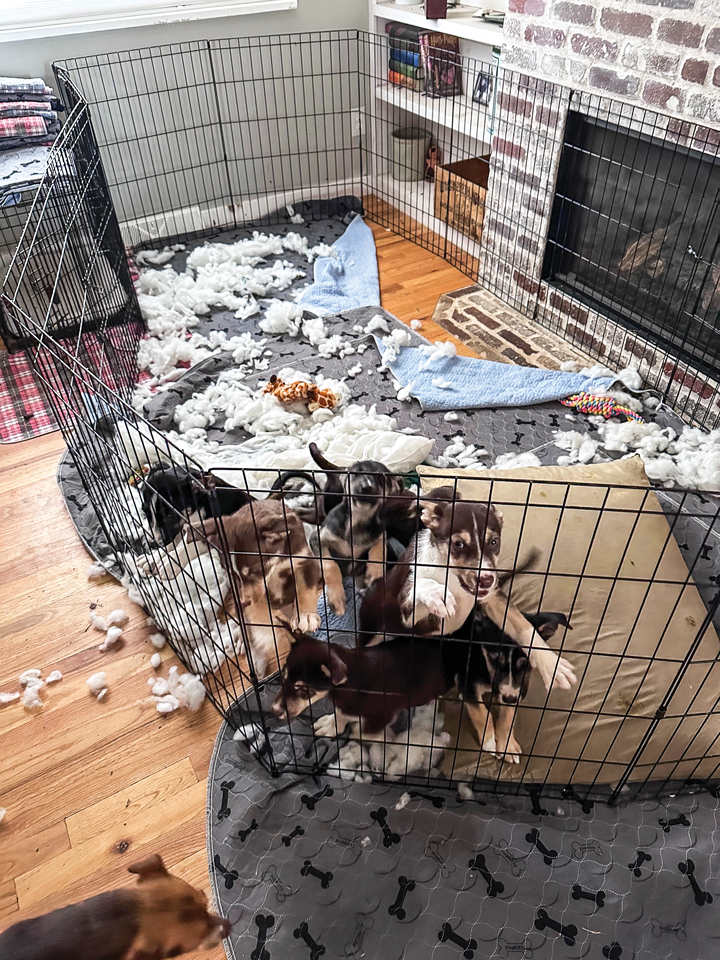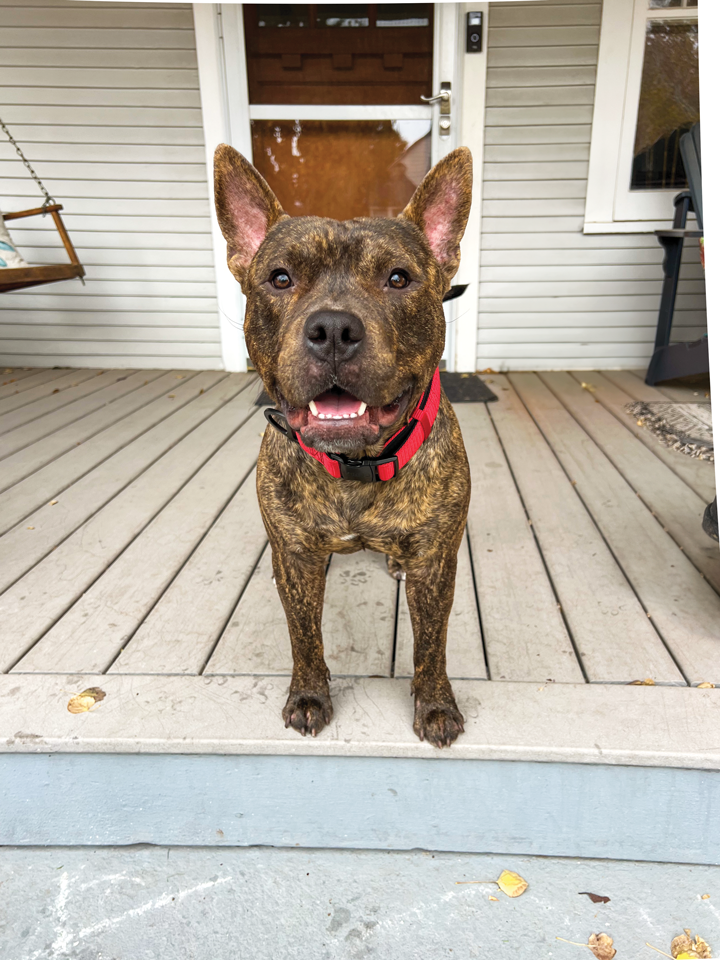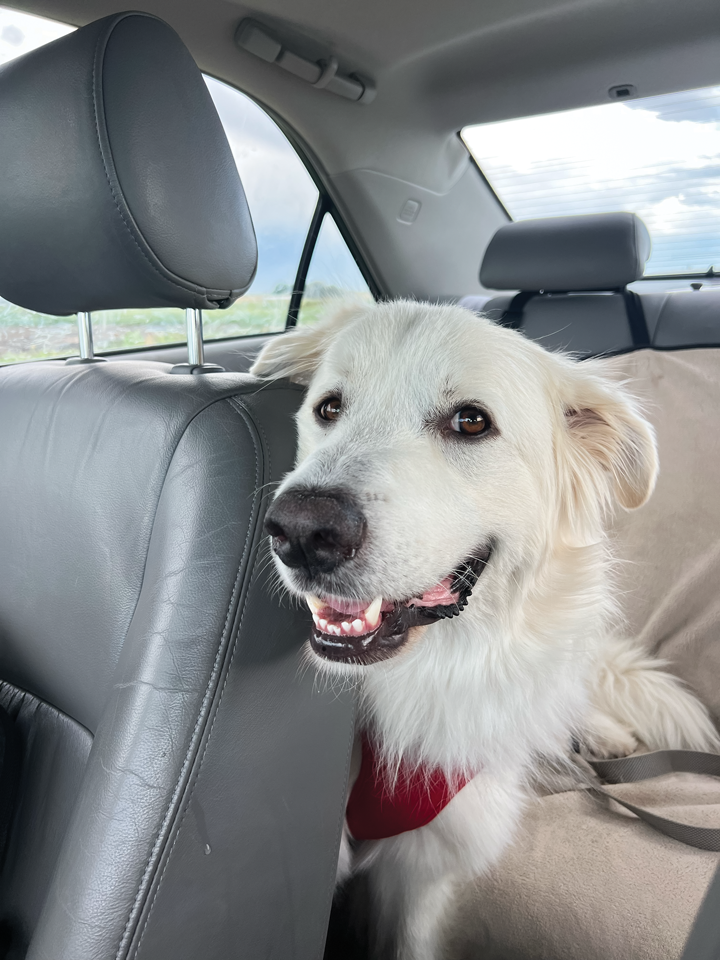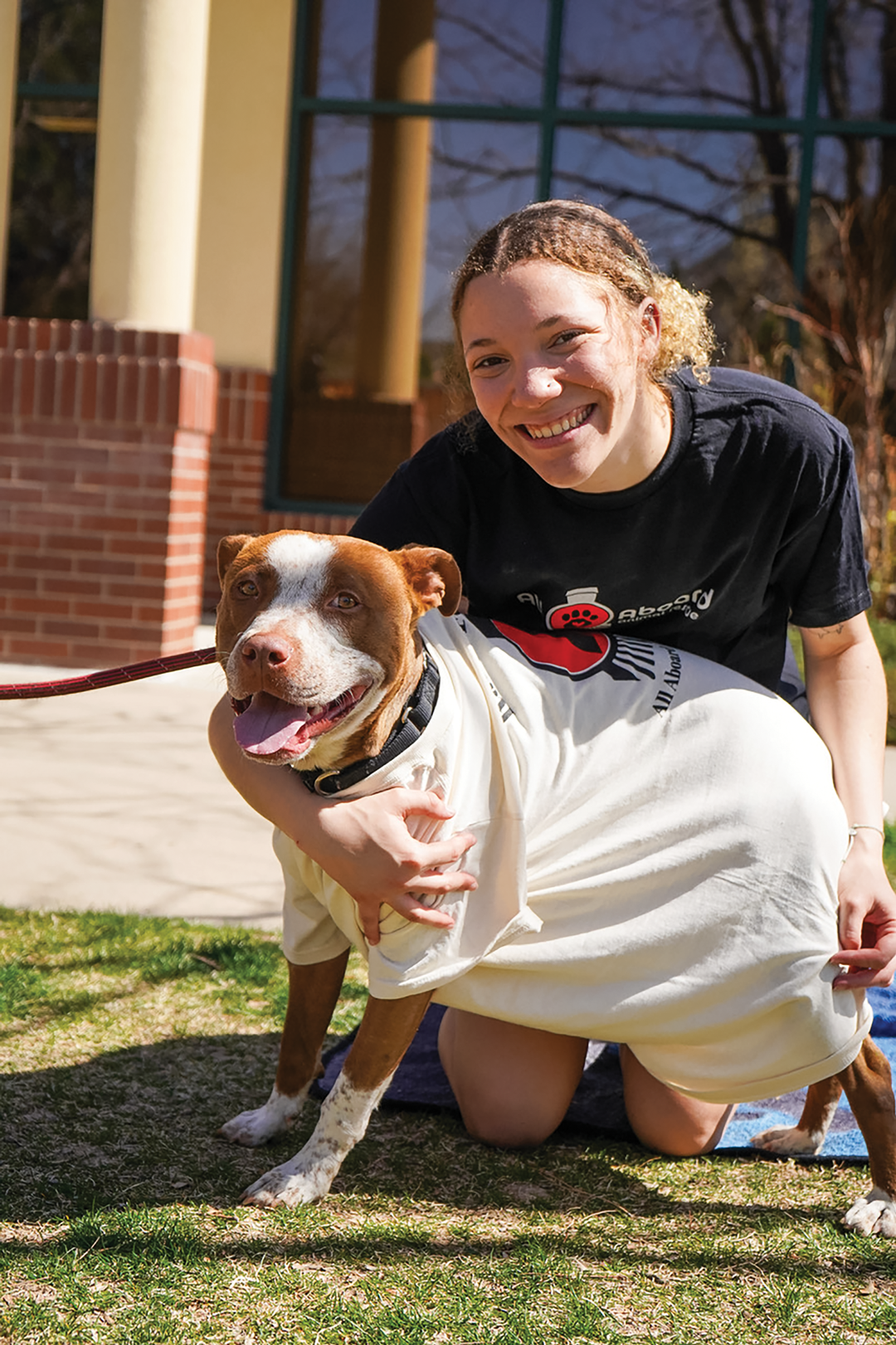Roger and Anita Radcliffe, who owned 101 spotted puppies in the animated Disney movie, “101 Dalmatians,” have nothing on Amy Cherry, a foster volunteer for Big Bones Canine Rescue. Since 2018, Cherry has fostered 514 dogs—not counting the 10 puppies recently birthed by foster dogs in her care.
The Greeley post office clerk has two dogs of her own, but she loves helping others in need.
“They can be strays, dogs on a euthanasia list or shy dogs who are scared to death. I love helping them recover from that and the joy of them finding their forever families,” she says.
Many of Cherry’s fosters are newborns. She takes on pregnant dogs and others under 15 pounds to prevent territory battles with her own small dogs. She helps with the birthing, nursing, feeding and vet care and has fostered as many as three moms with litters, plus a few more dogs, at one time.

Amy Cherry’s fostered husky puppies.
“Sometimes, 20- to 30-pound dogs have snuck in,” she says.
Even when penned inside her home, they can get into trouble, like the day she came home from work to find that a litter of nine huskies had shredded a dog bed.
Dogs often act out because they are nervous, shy or unsure of house rules, Cherry says, which may include peeing on your floor or chewing on things they shouldn’t.
“You need to be able to handle that responsibility and not get mad,” she says.
Cherry kept the huskies for an extra six weeks after they could’ve been adopted out and ended up needing to move them to another foster family. It broke her heart, but at 15 pounds, they were too big for her to handle, and she knew other pregnant dogs needed a spot in her home.
Essential animal care
Big Bones, which has shelters in Windsor and Wellington, and All Aboard Animal Rescue, located in Fort Collins, both rely on foster volunteers to help care for the volume of dogs—and some cats, in All Aboard’s program—they take in. Many other animal rescues, and even county animal shelters, also depend on foster volunteers.
It’s not an easy job. Many fosters interview potential adopters while caring for the animals (which involves lots of snuggles and playtime), and they understand that they’ll have to give up the animal to another loving person one day.
Cherry kept Polly, her first pregnant foster dog, but at first she didn’t know that Polly was expecting.
“We went through that whole thing together, and at the end, I couldn’t imagine her going anywhere,” Cherry says. “I’ve had a lot of favorites, but I go into it knowing they are temporary. It’s easy for me to let them go because I see the pictures of the ones who want to take their place. What breaks my heart are the ones who are left behind.”

Madison Spensieri King’s adopted pitbull, Roman.
A growing need
All Aboard’s rescue program began in 2012 and typically brings in 12-15 dogs per week. They don’t have an animal shelter, but they hold adoption events at their Fort Collins clinic or Murdoch’s Ranch & Home Supply (and occasionally other locations around Northern Colorado) every Saturday from 10 a.m.-1 p.m.
“There are only so many compassionate, available people at any time, and there are always dogs who are given up,” says Cassie Millar, All Aboard’s assistant director and foster coordinator. She and others agree that more fosters are needed across the board to keep up with the influx of rescues each shelter brings in.
Since 2019, Big Bones has averaged 2,000 adoptions annually. The rescue began in 2012 with bully breeds, Great Danes and mastiffs, but later added smaller breeds, puppies and elderly dogs, says Kristen Lizotte, volunteer vice president of Big Bones and manager of the Wellington facility.
The Windsor facility has 23 kennels, many of which are reserved for pregnant dogs, moms and puppies, whereas the Wellington facility has 15 kennels and spaces for smaller dogs. Big Bones has an average of 120 dogs in foster care that are ready for adoption at any time.
The animals that end up at Big Bones and other local rescues are transported from overflowing kill shelters in New Mexico, Texas, California, Oklahoma and other states that don’t enforce spay or neuter laws.
“Colorado is a good state for dogs because there isn’t rampant breeding and overproducing, and there are stringent laws on animal care,” Lizotte says. “When a dog is adopted, you’re adding space for three dogs: one in the shelter facility, one in a foster home and one in the Oklahoma kennel where we hold dogs.”
Colorado is nearly a no-kill state, Millar says, as “there has to be a behavioral or medical concern, unlike most other states, which euthanize dogs for space.” The state aims for no-kill status by 2025, according to the nonprofit No Kill Colorado.
In 2023, Best Friends Animal Society, a nonprofit with programs on spay, neuter and adoption options nationwide, reported that 55 out of 68 Colorado shelters were no-kill and that there was an 88.4 percent total save rate. The goal is 90 percent, a benchmark recognizing that some animals suffer from unresolvable medical or behavioral issues that prevent adoption.
Successful fostering
Madison Spensieri King began fostering for All Aboard in early 2023 after she and her husband became homeowners. She’d heard about a dog, Odell (a super sweet, crazy, barky border collie mix), whose owner turned him in to the humane society. After talking the owner into relinquishing Odell to her for fostering, Spensieri King picked him up and asked several area rescues to list him for adoption. All Aboard created a courtesy listing for Odell and, as a complete fluke, he was adopted to a family who had applied too late after seeing him on the humane society site.
“It was a cool, full-circle moment,” Spensieri King says, but she admits fostering is romanticized. “It’s work. You need to acclimate these pups and understand they’re not always going to have good days. There will be accidents; they’re nervous or don’t want to play with other pets. It’s not all wonderful like you see on TikTok.”
The foster programs at Big Bones and All Aboard provide training, support and advice for foster volunteers dealing with challenging dogs.
“A lot of it you figure out as you go,” Cherry says, “but help is always there if you need it.”
Both rescues provide their fosters with varying levels of supplies, many of them donations, including crates, food, toys, collars, leashes and bedding. Cherry buys food for her foster animals so they can maintain a consistent diet, which costs her $500-1,000 annually. Veterinary services are paid for by the rescues.
Big Bones allows foster volunteers to choose the dogs they want to take in, write the dogs’ bios and take their pictures for the website. They have about 200 foster volunteers on rotation.
“Our volunteer fosters handle the adoption process. They have our website software, set up meetings for potential adoption and ultimately decide if it’s a good fit,” Lizotte says, noting that Big Bones is entirely volunteer run.
All Aboard’s foster volunteers are also heavily involved in the adoption process and are required to attend the organization’s weekly adoption events.
Mental preparation to separate (or not)
Spensieri King mentally prepares herself for her fosters’ adoption, reminding herself that she’s helping the animals on their journey to their forever homes. She’s had fosters for days or weeks, and she knows it’s her responsibility to get them from point A to point B.
That doesn’t mean there aren’t “foster fails,” the term for what happens when a foster volunteer ends up adopting an animal. Spensieri King and her husband “failed” with their sixth foster after Tammi, their rottweiler, passed away. To fill that gap, Roman, a pit bull and Staffordshire mix, joined their family.
“He and Winston, our blue heeler and American Staffordshire terrier mix, are best friends with similar play styles,” Spensieri King says.
Cherry has “failed” another time since keeping Polly. RayRay, a 3-year-old cairn terrier and Maltese mix had arrived from California, where he lived in a feral pack. After being spooked by a track meet gun while living in another foster home, the dog escaped and wandered around Greeley for six weeks until he was caught by another rescue organization.
“He was not used to human contact,” Cherry says. “He would bite if I tried to pet him and run away at every opportunity. I didn’t want to put him into a new routine if he was adopted out, so I kept him.”
As RayRay got more comfortable, the little milestones he made were celebrated by a group Cherry formed on Facebook. These days, Cherry can hand feed and pet him without any issues.
Millar says All Aboard sees 30-40 percent of fosters “fail,” but she believes there’s no such thing as a failure with a dog when you make a loving, lifelong commitment.
“It’s no longer a temporary commitment. You’re with that dog for their life,” she says. “In partner shelters, they often encourage fosters not to adopt, but I want to make love matches between humans and animals, and it’s not always a straightforward, planned process.”

Tips for Taking Care of a Foster Dog
Clean up your house.
Preparing your home includes removing trash, cords and anything else a dog can chew on, Millar says.
Create their space.
Where fosters sleep is your choice, whether that’s a crate, playpen or your bed, Cherry says. She works during the day, so she keeps her fosters in a playpen when she’s gone to (hopefully) prevent coming home to a big mess.
Make intentional introductions.
If you have pets, make sure they’re compatible with the newcomers and provide separate spaces if necessary. Millar suggests leash walking dogs in a neutral area for their introduction, allowing them to choose a comfortable distance.
Have patience.
“Tiffs [with other pets] are normal as they assert boundaries, as is resource guarding (of toys, food and people),” Millar says. “Patience is huge for both the dogs and foster parents.”







